The coffee berry borer (CBB), or Hypothenemus hampei, is a beetle that attacks coffee crops. It is the most serious pest of coffee worldwide and is present in almost all coffee-producing countries. The pest damages coffee beans, reducing the quality and yield of coffee.
According to the FAO, coffee is the most widely traded tropical product. 80% of coffee is produced by 25 million farming households, mostly smallholders.
The CBB threatens farmers’ incomes and must be tackled with adequate measures. An integrated pest management (IPM) approach can safely and sustainably control the pest. It relies on cultural practices and biocontrol and biopesticide products.
Overview
- Identification
- Life cycle
- Damages
- How to safely and sustainably control the coffee berry borer?
- Benefits of using IPM against the coffee berry borer
Identification
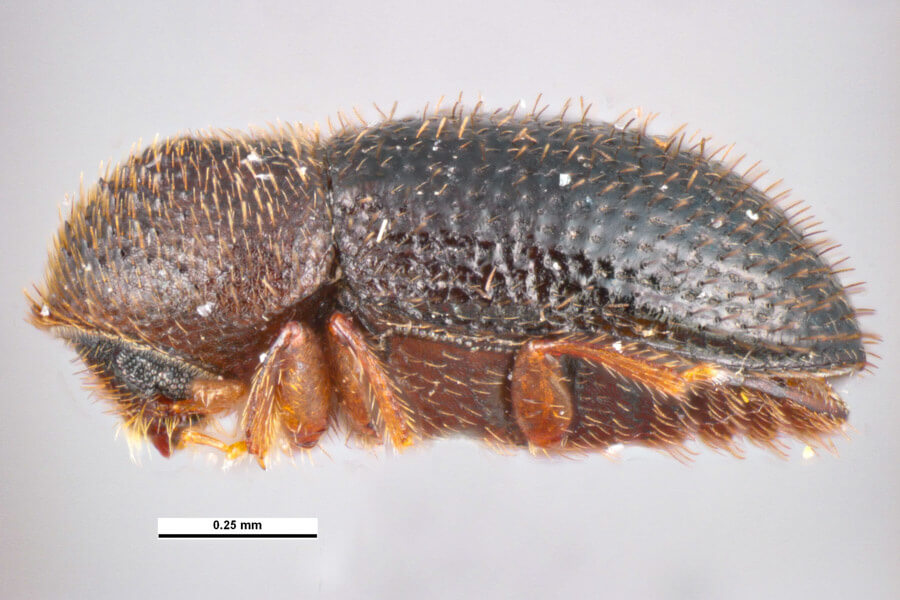
The CBB is a beetle that measures 1-2mm. It is the only beetle that attacks the coffee bean inside coffee fruits, also called berries. Thus, you can confirm the pest presence by opening a coffee berry. A berry attacked by the CBB can contain many individuals, both adult beetles and immature individuals (eggs and larvae) located in the bean.
The first symptoms of a CBB attack are usually visible 8 weeks after flowering. You can see a small hole (1mm large) at the tip of berries, sometimes surrounded by sawdust-like residues.
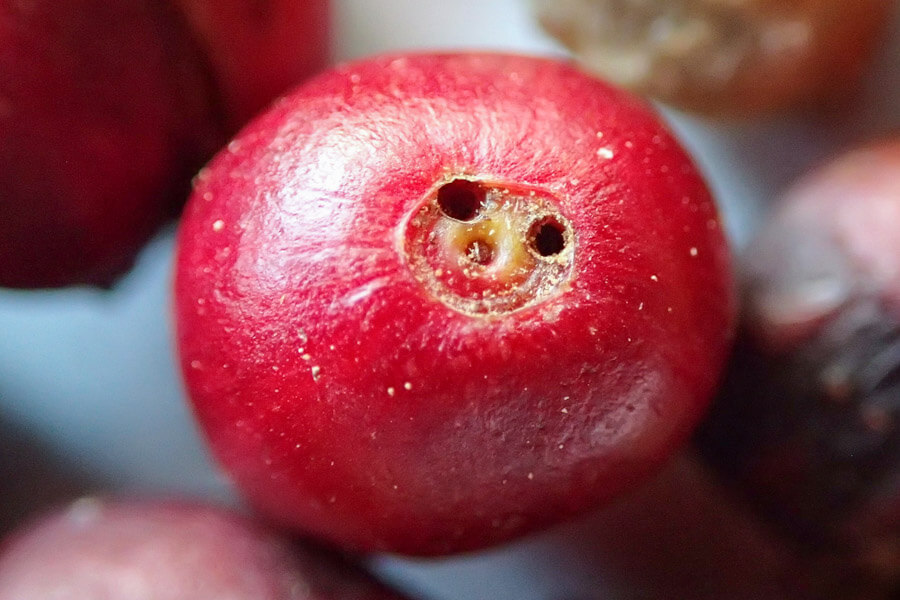

Life cycle
The CBB attacks immature and mature coffee berries. The adult females bore holes into the berries and lay eggs in the coffee beans. Later, the offspring fully develops inside the berries, from eggs to adults, and feeds on the beans. Usually, only adult females leave the berry to lay eggs in new coffee berries.
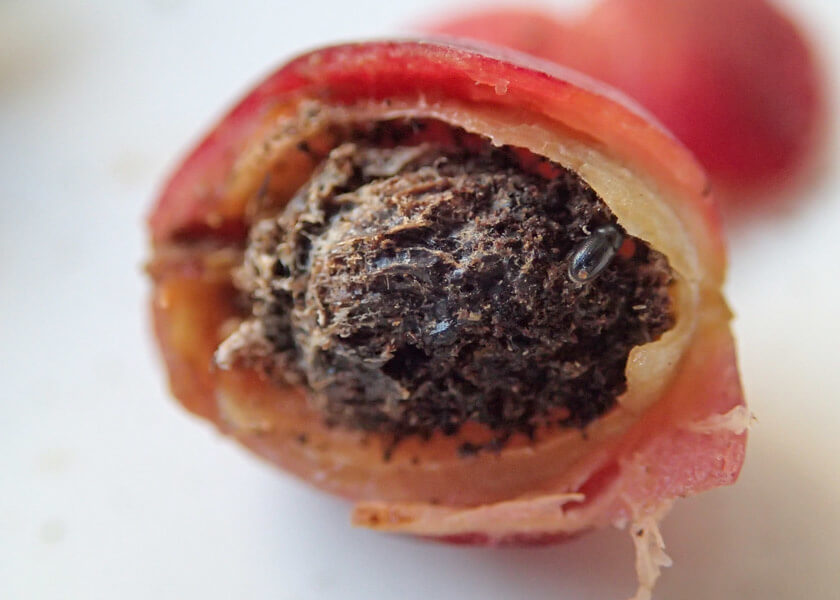

This explains why the CBB is hard to control once established, as most individuals remain inside the berries or beans.
The life cycle of the CBB spans over a month. Several generations can damage the coffee berries and beans during a cropping season.
This pest also overwinters and remains inactive in berries. The coffee berry borer can re-infest coffee trees in the next cropping season.
Damages
Feeding of the CBB inside berries causes extensive damage to these fruits and their beans. The pest can feed on the whole berry, with nothing remaining.
Infested fruits are also more likely to be infected by fungal and bacterial diseases.
In some cases, infestation leads to fruit rot and early falling of berries.


Such damage reduces the quality and yield of coffee. We estimate the losses due to the pests at US $ 500 million per year globally.
- For more information on the coffee berry borer, visit the PlantwisePlus Knowledge Bank, the CABI Compendium (English only) or CropLife’s website (Spanish only).
How to safely and sustainably control the coffee berry borer?
Controlling CBB is complex, but a combination of IPM methods can effectively manage it. Using these methods ensures a sustainable and effective reduction of the pest population.
Best practices ensure that the presence of the CBB is detected early. It is essential to do so, so that you can act quickly to keep the infestation at a low level. Such measures include regular monitoring of coffee trees and fruits for pest presence.
Cultural methods
The most effective cultural method is the post-harvest collection and destruction of remaining and fallen fruit. This is called field sanitation. You need to do it at the end of the cropping season, before pruning, and at the beginning of the next cropping season.
This is important as the CBB survives in coffee berries and continues reproducing. The pest population increases and will create even more damage in the next season.
- For more information on how to do that, read this complete guide or watch this video (subtitles available).
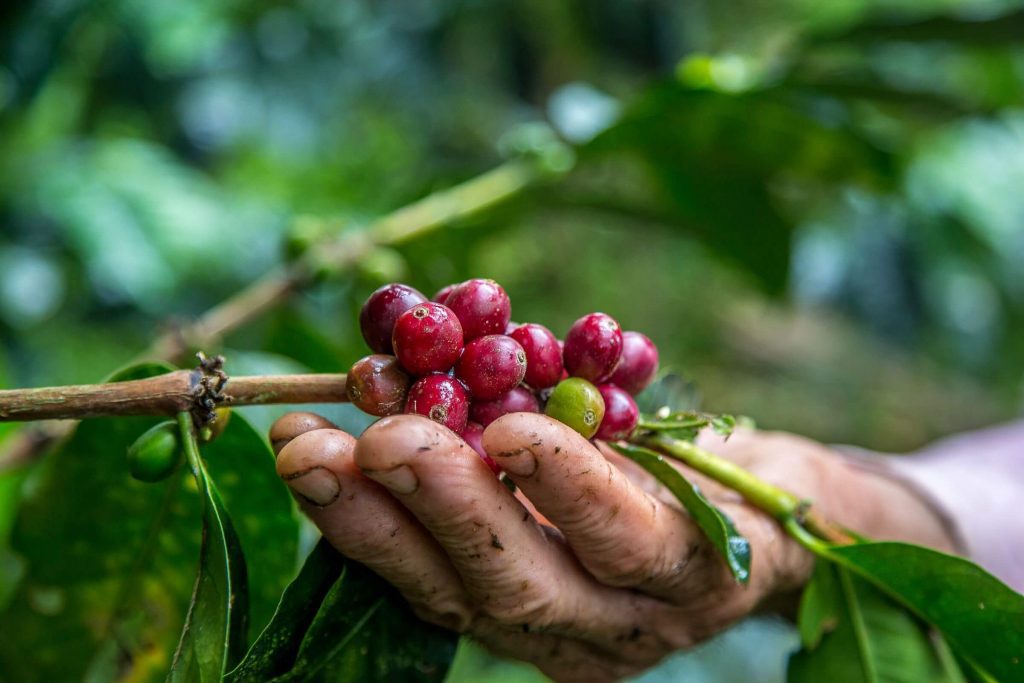

Biocontrol and biopesticide products
Biocontrol and biopesticide products can also help manage the CBB.
You can use fungal biopesticides to fight this pest. These include products containing the fungi Metarhizium anisopliae or Beauveria bassiana, which can attack the CBB directly. Many coffee-producing countries have registered these products.
You should spray biopesticides at the correct time to ensure their anticipated effect. Spraying of the fungal biopesticides for example is most effective when adult CBB have just started boring into the berries and are still visible. The level of CBB infestation is also necessary to consider.
- To know exactly when the best time is to spray biopesticides like Beauveria bassiana, follow this step-by-step guide (English only), or watch these two videos: part 1 and part 2 (subtitles available).
- For more information, in Spanish, about IPM practices against CBB, check this guide.
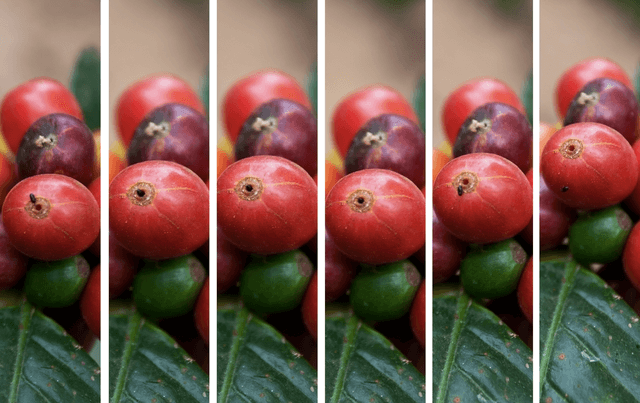

You can also use parasitic nematodes to manage CBB. For instance, the nematode Heterorhabditis bacteriophora is able to penetrate the infested berries and kill CBB. This nematode can infect both adults and larvae and causes a high level of mortality.
You can set up traps for both monitoring and controlling CBB. Some traps, such as pheromone or ethanol-methanol-baited traps, work as attractants and are an effective control measure. Usually, they are the most effective when female adults are flying. This means from post-harvest to early fruit growth.
- Read our blog ‘How to use bioprotection‘ to apply your products effectively.
Chemical pesticides
Chemical pesticides can be used, but they bring other concerning issues such as pest resistance, unwanted chemical residues on produce, and environmental toxicity.
For instance, CBB has developed resistance to the chemical endosulfan, a common chemical used for many years for CBB control. Numerous countries have also banned this chemical pesticide afterwards due to health and environmental concerns.
Thus, these pesticides are not a sustainable alternative. You should prefer IPM practices as they can effectively keep CBB infestation levels low.
Benefits of using IPM against the coffee berry borer
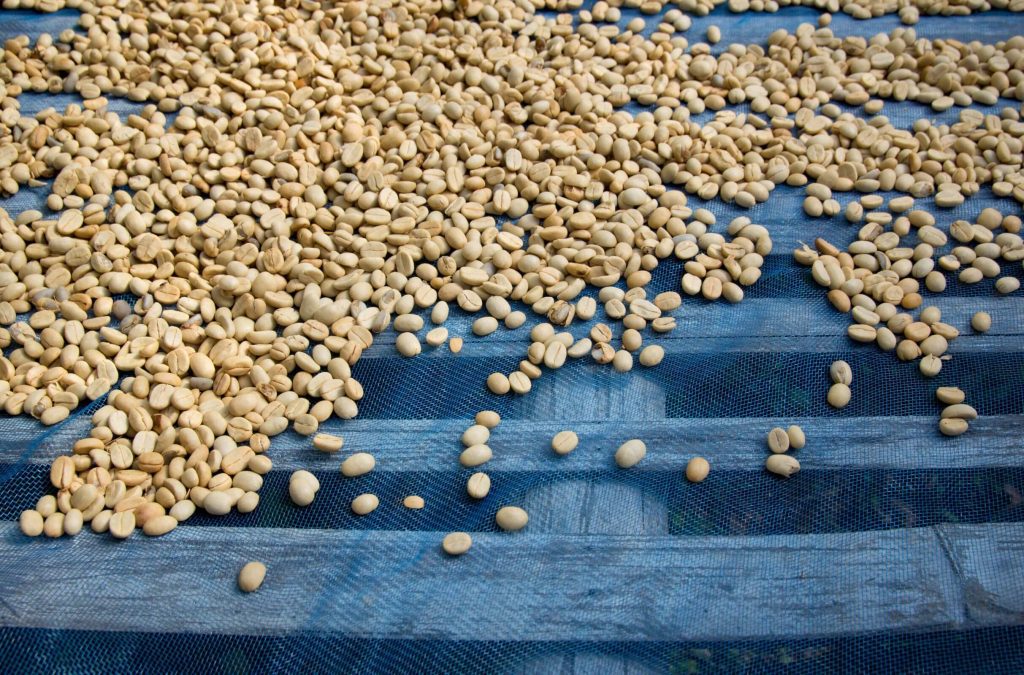

In recent years, there has been a desire to decrease the use of chemical pesticides in favour of products that comply with organic certification and are better for the environment.
Using chemical pesticides can prevent growers from accessing some international markets. An IPM approach, combining cultural methods and biocontrol solutions, can ensure a better quality of coffee. It can even guarantee a higher price for coffee beans as growers can reach stricter markets.
Safer alternatives for the environment are especially needed now with climate change. Climate change is already impacting the production of coffee. Its effects will continue to increase in the future. Rising temperatures will likely increase CBB pressure on coffee crops as their life cycle will shorten and rate of reproduction will increase.
Browse the CABI BioProtection Portal for registered bioprotection products against the coffee berry borer in your country.
